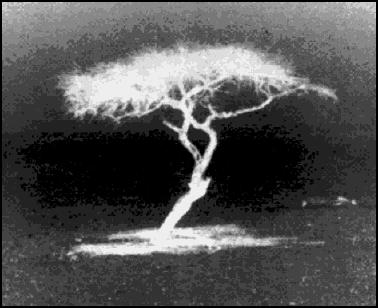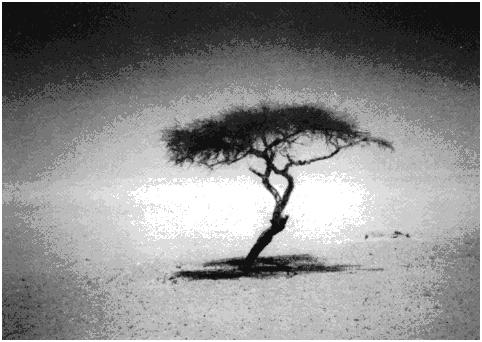A Natural History
Marq de Villiers,
Sheila Hirtle
(Walker & Co.)

The main trade of the desert has traditionally been salt, gold, and slaves. Over the centuries, say the authors, the Arabs had "an inexhaustible hunger" for slaves.
A slave was worth much less than a good camel, which was a fair approximation of their relative value. A "good black slave" was about half the price of a good piebald, brindled, or white camel, and was considerably less than the tawny reddish-buff racing camels, so prized for their speed and endurance.
Slavery probably still exists, the authors claim, but the word used now is haratin, which means "vassals." A cynic of Timbuktu once said to them, "Yes, they freed the slaves in 1968, but not all of them have been told yet."
The western Sahara is probably the source of the hurricanes that strike in the Caribbean, and may be as well the source of the "red tide" that devastates fish.
When it rains in the desert, "it rains torrentially, in thunderstorms that cause flash floods" which, on occasion, drown entire caravans. Five major aquifers have been found under the Sahara --- some of which are being tapped, especially in Libya. That one, the Northern Aquifer, is expected to last no more than forty years.
The highest temperature recorded in the desert was in Libya (136° F). The greatest lows have been recorded in the Tibesti mountains, (5° F). A test in Bouroukou, Chad, "measured an evaporation rate of more than 304 inches a year, the highest yet recorded."
In the summer on the mountains the relative humidity is so low it can be life threatening --- 2.5 percent, compared to a "norm" of 30 percent.
The most feared storm is known as the harmattan (like Eskimos with snow, the desert dwellers have many different words for the different kinds of storms).
The coming of the harmattan strips the air of what little moisture remains. Humidity has been tracked to fall from 80 percent to 10 percent within hours. When a gale is in full cry, visibility is reduced to a few yards. Sand penetrates everything. There is grit in the food, grit in the water, grit on the sheets in the hotels. If you close the windows against the sand, as you must, the temperature can climb steadily, and reach 120 degrees, 125 degrees, and the air sears the lungs... Sandstorms can be black as night or a lurid yellow or a bleak gray the color of old ash; they may hiss or roar, or rumble like thunder; the air is oven hot and crackles with static and a hand run over a canvas tent pops and sparks like methane breath on a smoldering coal tip; nerve-ends tingle with electricity and firefly sparks jump and snap. Even camels' tails spark and crackle.
